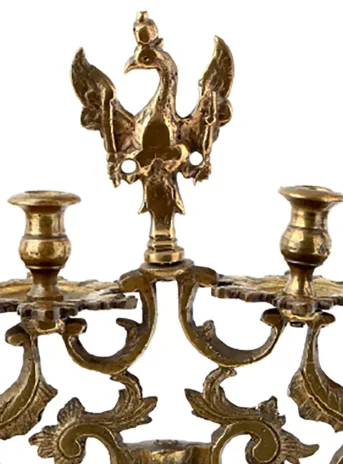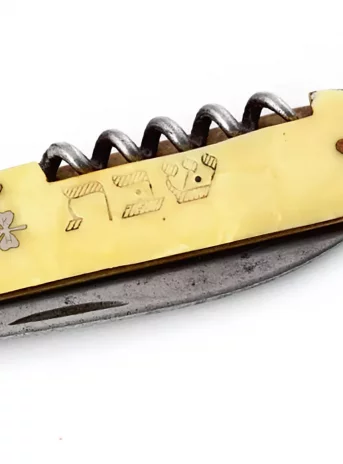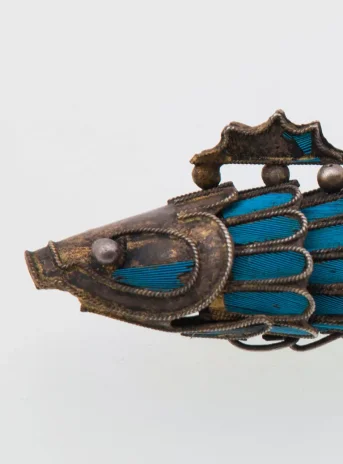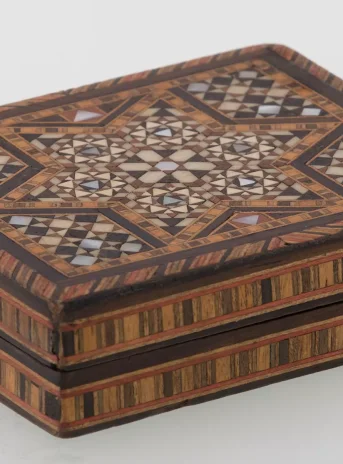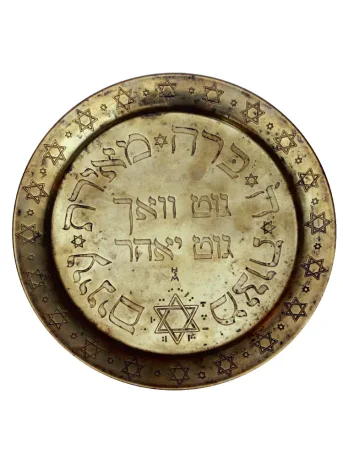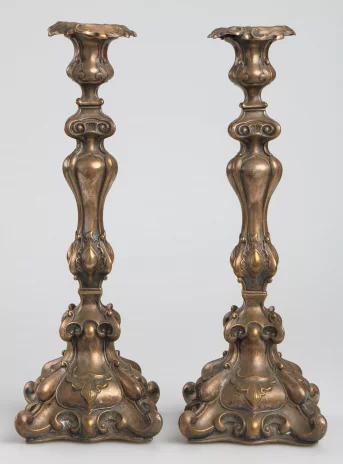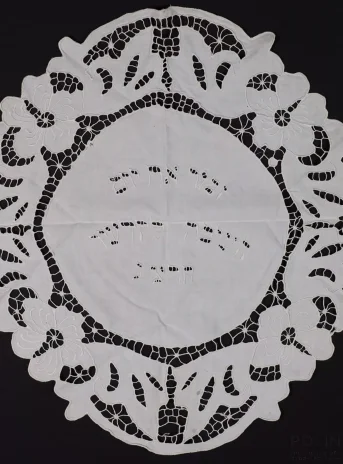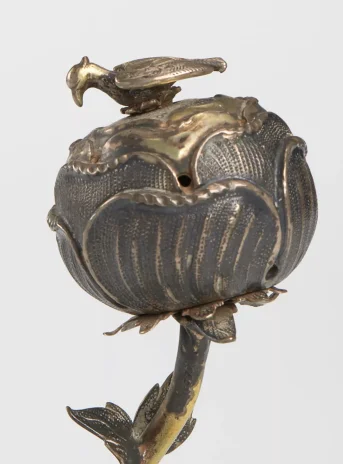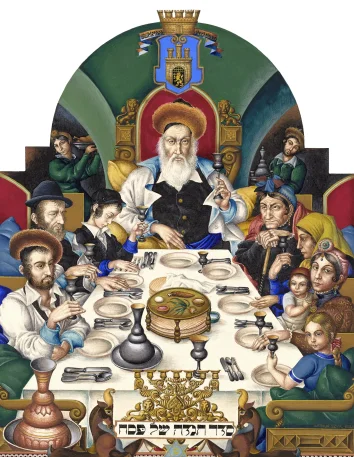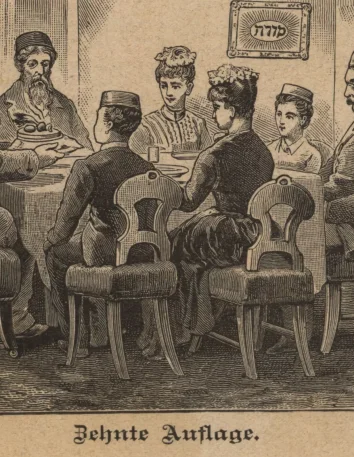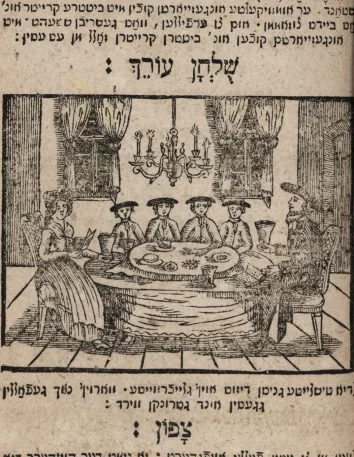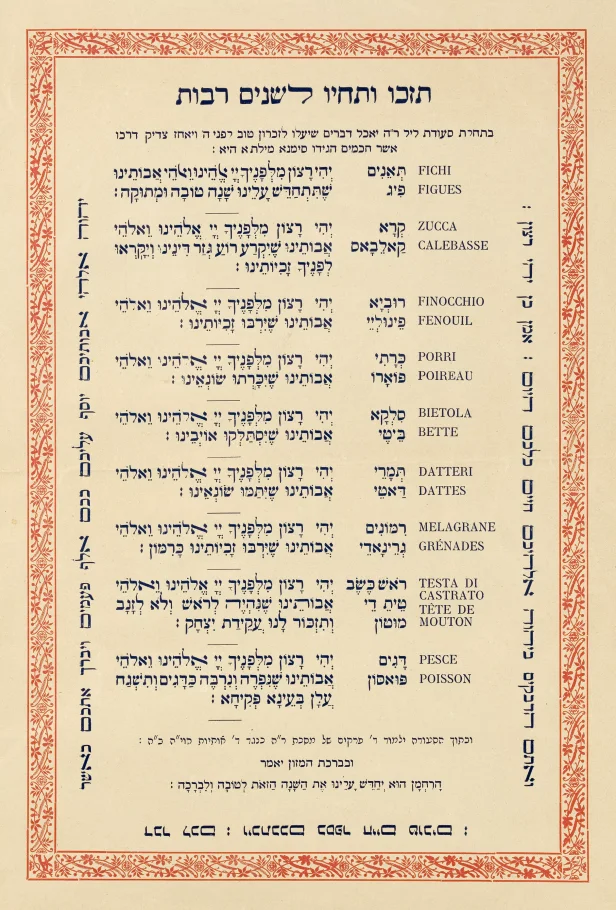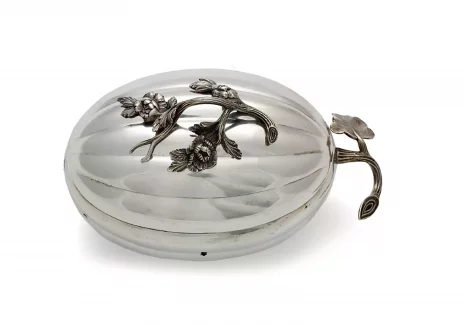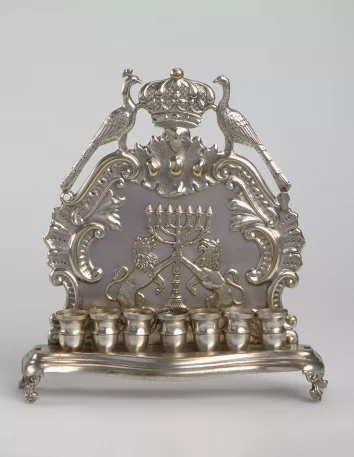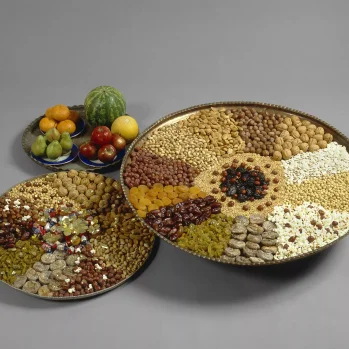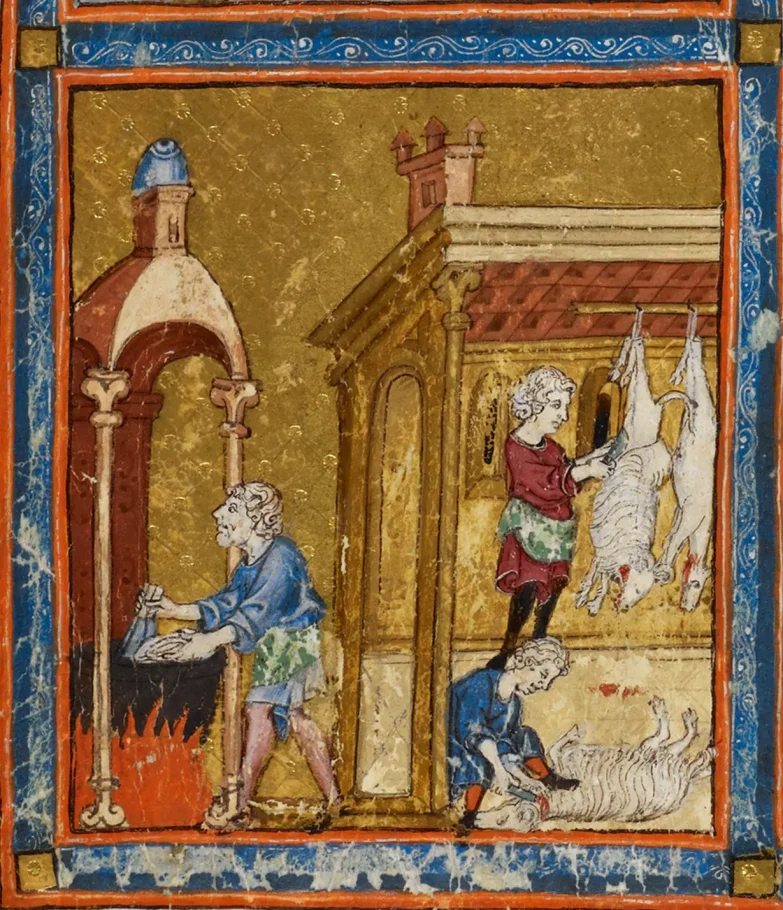
Preparing for Pesach: the slaughter of the lambs and koshering dishes
Illustration in the so-called "Golden Haggadah" produced in Spain, 15th c.
British Library, London
Holidays
Special rules apply to the preparation of food for holidays. These practices developed over centuries—some date back to the time when Jews had their own kingdom and the Temple in Jerusalem; many arose in the Diaspora. Following the destruction of the Temple and the transition from Temple Judaism to Rabbinic Judaism, prayers and rituals celebrated at home and in the synagogue replaced Temple worship, and meals prepared in an appropriate manner played a symbolic role. The dishes of Jews in the Diaspora differ depending on where they live, but they share similar principles with regard to preparation and consumption as well as symbolism.
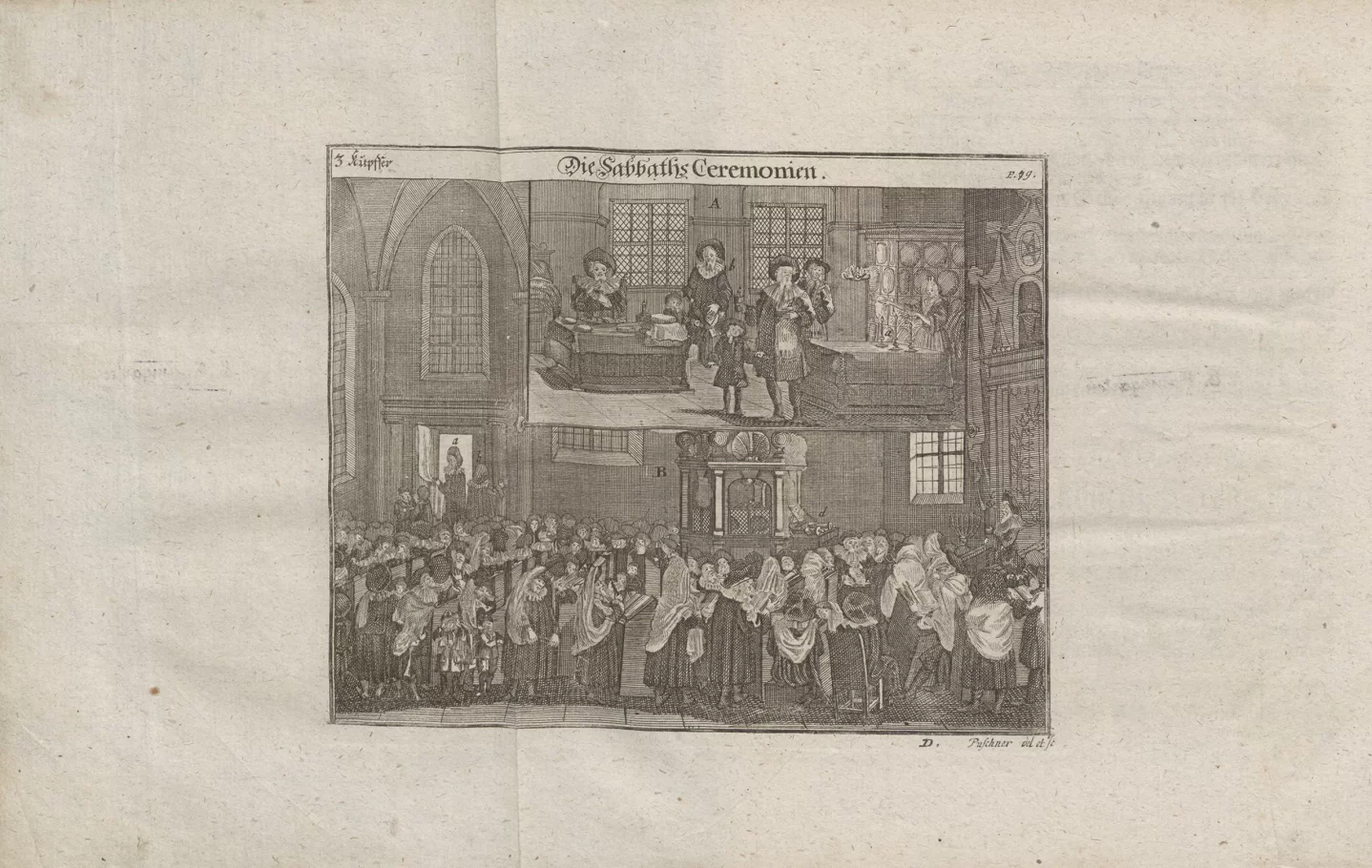
Shabbat, a supper at home and a night service at a synagogue
Illustration in "Jüdisches Ceremoniel" (Jewish Ritual) by Paul Christian Kirchner, Nuremberg, 1734
Jewish Historical Institute, Warsaw
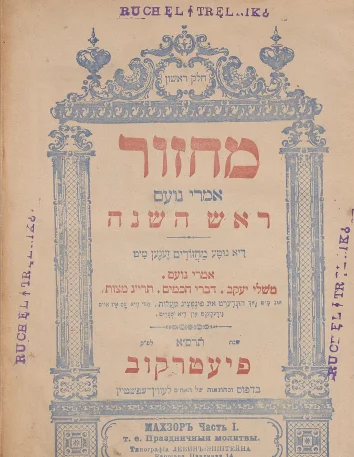
"Makhzor", vol. 1: Rosh-ha-Shana
Includes prayers for Rosh Hashana. Warsaw, Piotrków, 1901.
POLIN Museum of the History of Polish Jews
See related objects
Circle of life
Tishri
September | October



Cheshvan
October | November
Kislev
November | December

Tevet
December | January
Shevat
January | February

Adar
February | March

Nisan
March | April

Iyar
April | May
Sivan
May | June

Tammuz
June | July
Av
July | August

Elul
August | September
Shabbat
Shabbat is a day of rest that begins every Friday at sunset and ends the next day when the sun goes day. It is perhaps the most significant part of Jewish observance. In the Book of Genesis, God created the world in six days, and on the seventh he rested. This set the precendent upon which Shabbat is based, that rest is an essential part of life and all other activities would be impossible without it. On Shabbat, Jews must abstain from any kind of work, and instead devotethemselves to prayer and family. They eat bread specially prepared for the occasion.

Challah
Challah
Challah is the most widely known Sabbath bread being. One interpretation says that the word “Challah” refers to a portion of dough that was traditionally given to the Temple priests. After the destruction of the Second Temple, however, this piece was thrown into the fire to carry on the practice. The shape and size of Challah also contain symbolic meaning: the two loaves served on Shabbat refer to the double portion of manna given by God to the Jews on Fridays during their 40-year wandering through the desert, and the 6 strands in the two challahs symbolize the 12 tribes of Israel.
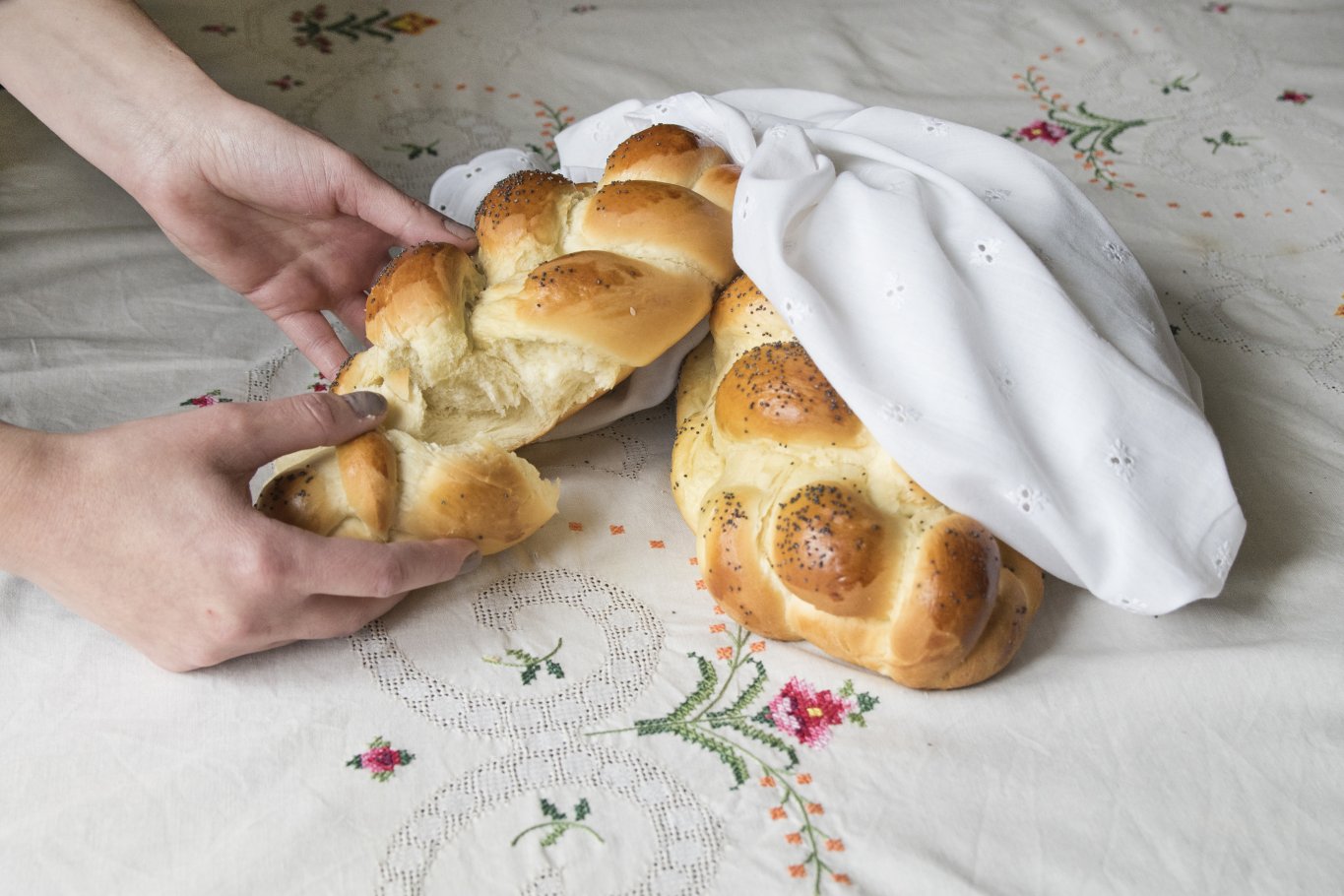
CHALLAH
Cook it!
Pesach
Pesach (Passover) commemorates the Jewish exodus from Egypt. It tells the story of how God chose Moses to lead the people out of slavery. As is written in the Book of Exodus, the Jews did not have time to wait for their bread dough to rise before fleeing Egypt, and hurriedly took unleavened bread with them for the journey. In commemoration of this sacrifice, leavened bread, flour and cereals containing leaven are not permitted during Pesach holiday. Pesach lasts for 8 days (7 days in Israel) and begins with a seder dinner. During the meal everyone gathered at the table reads from the Haggadah, a short book containing the story of Exodus and ceremonial acts that bring the narrative to life. Symbolic dishes served on a seder plate are consumed in the course of the narrative.
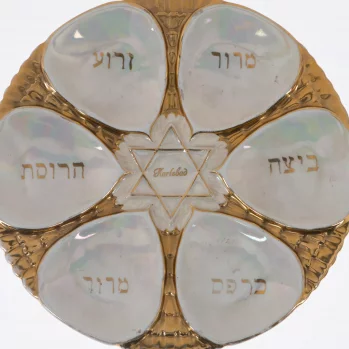
Seder plate
In the Ashkenazi custom, each dish had its own assigned place on the seder plate. Pocelain, Bohemia, Austria-Hungary, before 1918.
National Museum in Lublin
See related objects
Seder plate
A sweet brown mixture made from grated apples and chopped dried fruit and nuts which resembles the mortar and brick used by the Hebrew slaves to build the pyramids in Egypt.
Charoset
Horseradish and romaine lettuce (or endive) – bitter herbs symbolize the bitterness and harshness of slavery.
Horseradish and romaine lettuce (or endive) – bitter herbs symbolize the bitterness and harshness of slavery.
Maror and chazeret

A roasted egg symbolizes korban chagigah (heb., "festival sacrifice") that was offered at the Temple of Jerusalem.
Beitsah
The obligation to eat matzah is fulfilled precisely during the seder. Everyone present at the seder table must consume at least two-thirds of a piece of matzo over the course of the evening.
Matzo
A vegetable (not a bitter herb) representing spring – the season when Passover is celebrated – as well as , hope and renewal .
Karpas
A lamb shank bone (or a piece of roasted meat) symbolizes korban Pesach, a sacrificial lamb that was offered at the Temple of Jerusalem.
Zeroa
Matzo
During Pesach, a flat bread called matzo is consumed. It is made from flour mixed with water, in the shape of an oval or square with holes in it to prevent it from rising. The whole process cannot last longer than 18 minutes after which sourdough starts to form. Sephardic matzo is softer, resembling pita, while Ashkenazi matzo is harder, resembling a cracker. During the seder dinner, it is obligatory for each participant to consume at least two-thirds of a piece of matzo.
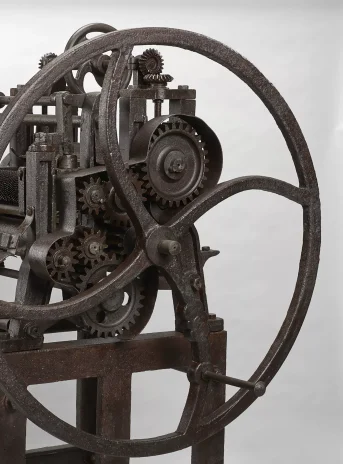
Matzo-making machine
The machine was found after the Second World War near Siemiatycze. Before 1939.
POLIN Museum of the History of Polish Jews
View 3D
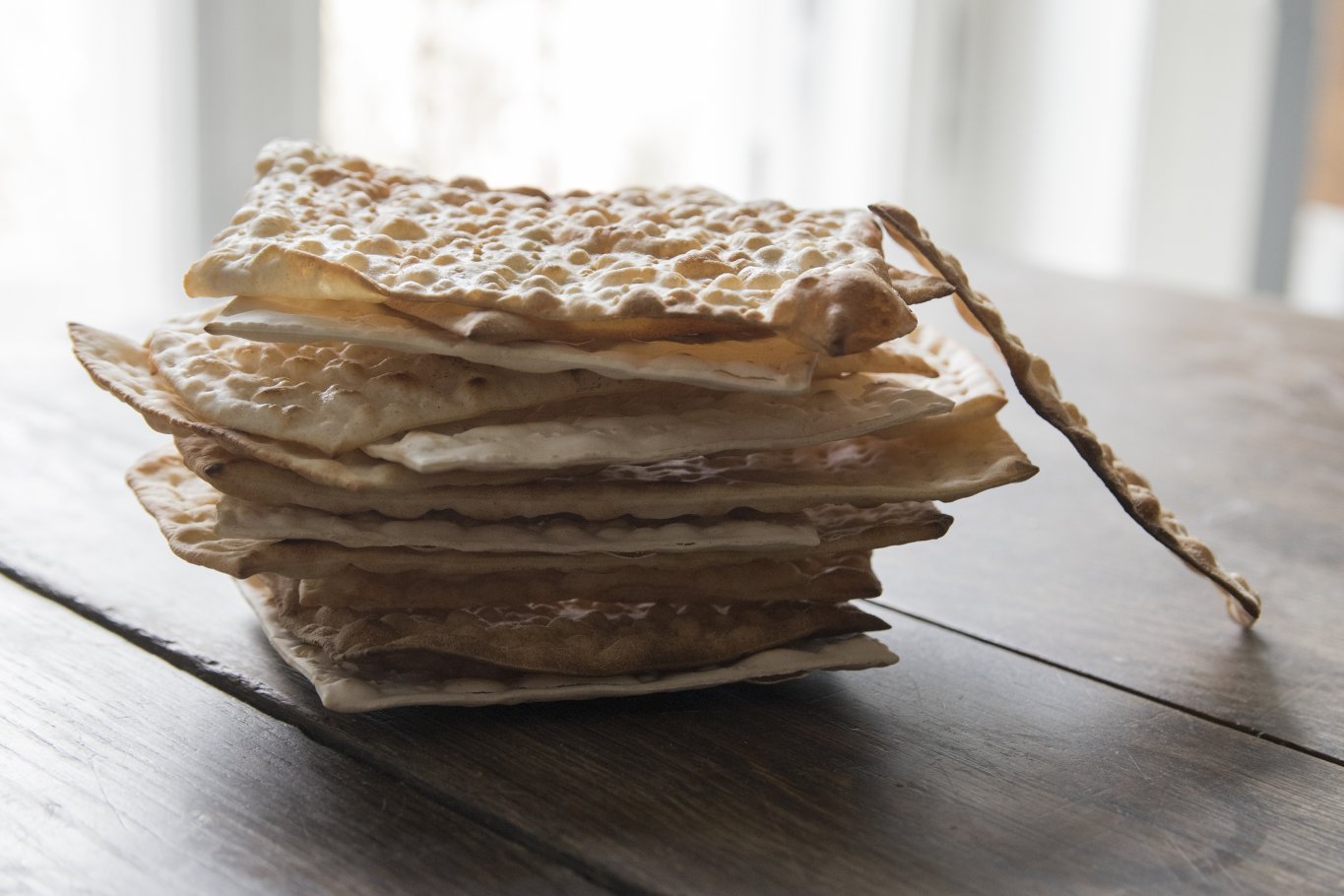
MATZO
Cook it!
Rosh Hashana
Rosh Hashanah is the celebration of the Jewish new year, commemorating the creation of humanity and reminds of God’s judgement. Traditional foods eaten to mark the occasion include apples dipped in honey which symbolise the hope for a sweet and happy year, circular-shaped Challah signifying the annual cycle, fullness and prosperity, and fish with a head—a sign of a new beginning. In addition, a number of foods are consumed (their selection depends on the region), the so-called simanim [Hebr., "symbols’] which stand for wishes for the new year. A special blessing is recited over them.
Yom Kippur
Yom Kippur, or the Day of Atonement, closes the High Holy Days including Rosh Hashanah and the Ten Days of Repentance, during which God judges people. From sunset until sundown on the following day, a strict fast is observed to help a person in the process of repentance. The meal consumed before the fast begins plays a major role—it should be hearty, meaty, but not salty or spicy, to make the time of abstaining from food easier.
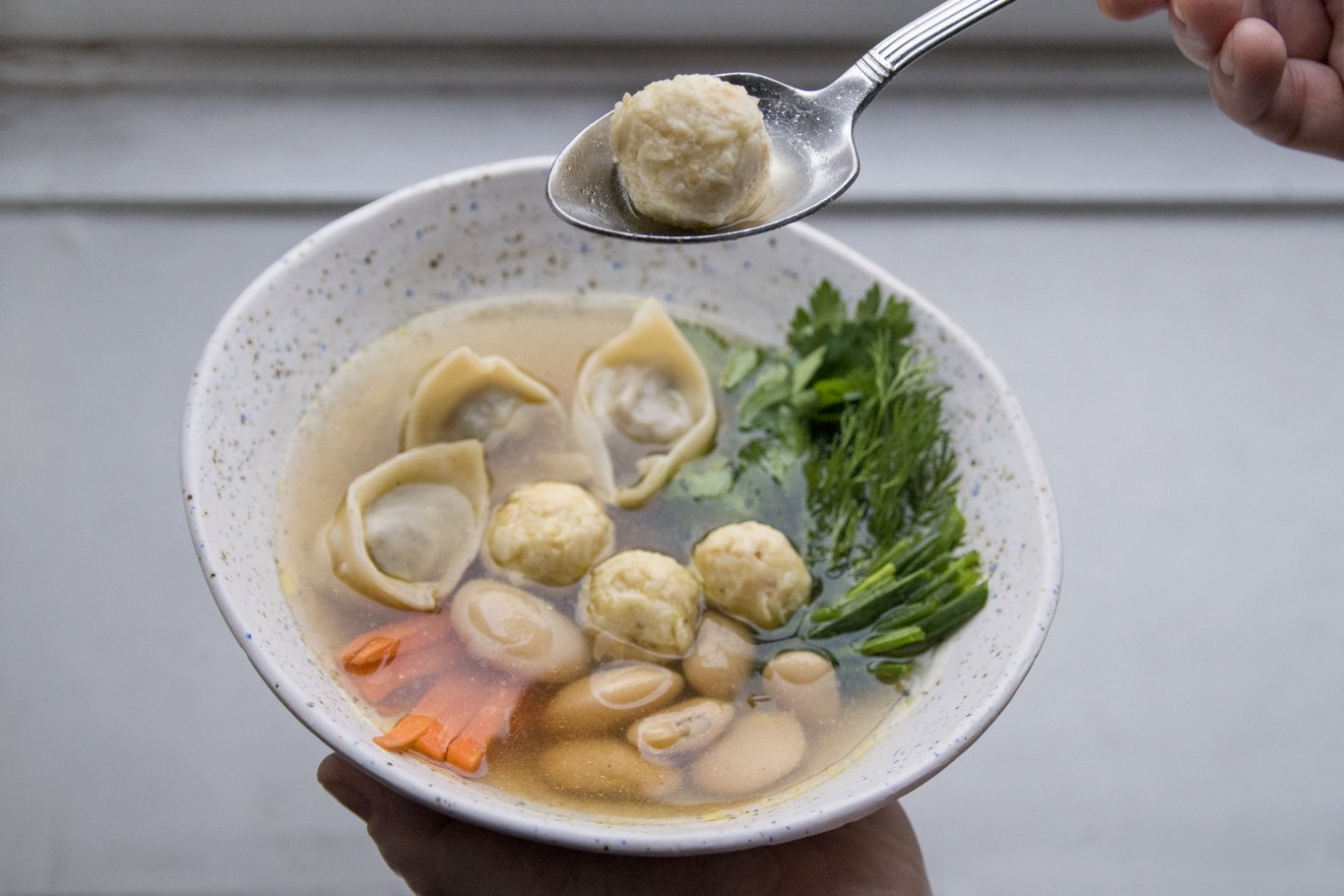
VEGETABLE BROTH (the best WITH KNEIDLACH AND KREPLACH)
Cook it!
Sukkot
Sukkot is a joyous holiday commemorating Jews living in huts in the desert during their flight from Egypt. During the seven days of the holiday, meals are eaten in a specially erected tent or hut—a sukkah—whose roof must be made of branches, leaving sufficient gaps to allow those inside to see the sky and stars at night. Festive meals are sweet, succulent, stuffed foods such as dumplings, stuffed cabbage leaves (holishkes), fruit and sweet pastries.
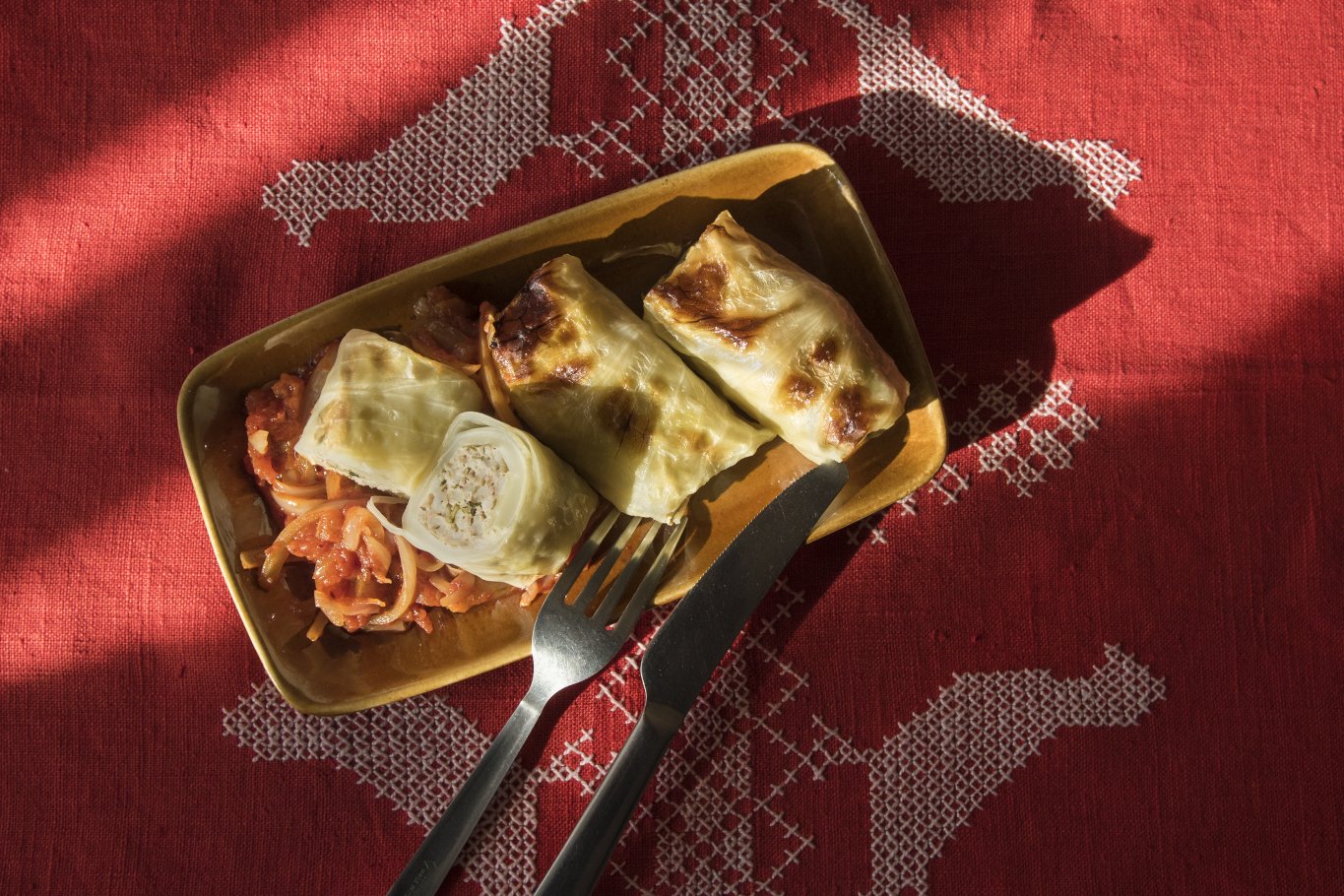
Holishkes
Cook it!
Hanukkah
Hanukkah is celebrated to commemorate the victorious uprising of the Maccabees in the 2nd century BC and the rededication of the Temple which had been recaptured from non-Jewish rulers. According to tradition, the Temple’s candelabrum, the menorah, remained lit for eight days despite the fact that they had oil for only one day. To commemorate this miraculous multiplication of oil, Jews eat deep-fried dishes such as latkes (Yid., "potato pancakes") or doughnuts. Since the Middle Ages, meals from cheese —cheesecakes, or cheese blintzes— are eaten during Hanukkah to commemorate the act of Judith who fed Holofernes with salty cheese to make him thirsty, then got him drunk and cut his head off.

DOUGHNUTS – LOUKOUMADES
Cook it!
Tu b’Shevat
Tu b’Shevat is a holiday falling on the 15th of the month of Shevat, which marks the end of winter. This holiday is also known as the “New Year of the Trees”. In ancient times, the marking of the age of trees was important because Jewish farmers were required to make fruit offerings, and the amount of offerings depended on the age of the trees. Thus, many tree fruits are eaten on this day. In present-day Israel, children and teenagers plant trees to commemorate Tu b’Shevat.
Purim
Purim commemorates the story described in the Scroll of Esther which in all likelihood took place in the 6th century BC during the Babylonian captivity. It was the miraculous deliverance of the Jews from the hands of Haman who planned to exterminate them across Persia. The holiday has a joyous and carnival-like character. Its vital element is performing plays referring to the biblical story of Esther, culminating in the hanging of Haman. The traditional food eaten on that day is a poppy-seed-filled triangular cake, the so-called hamantash, or Haman's pockets.
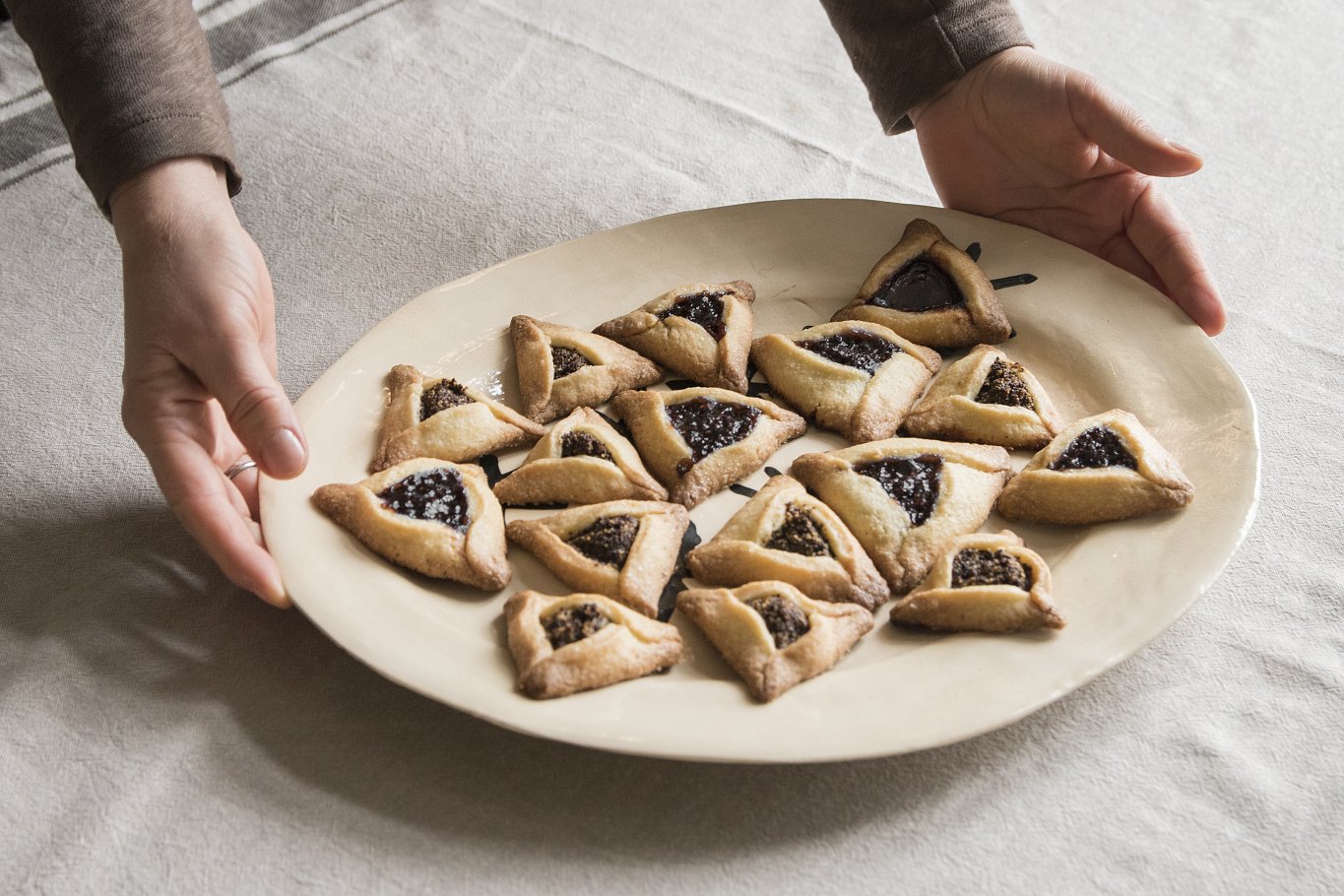
HAMANTASH
Cook it!
Shavuot
Shavuot, also known as the Harvest Festival, was agricultural in nature back in Biblical times, as it coincided with the harvest season. During the rabbinical period, it began to commemorate God handing over the Torah to Moses at Mount Sinai. Festive dishes include dairy products, flour and fruit. According to tradition, on Shavuot, with the acceptance of the Torah, Jews were obliged to keep kosher. Since they needed time to producekosher meat, dairy meals prevailed.
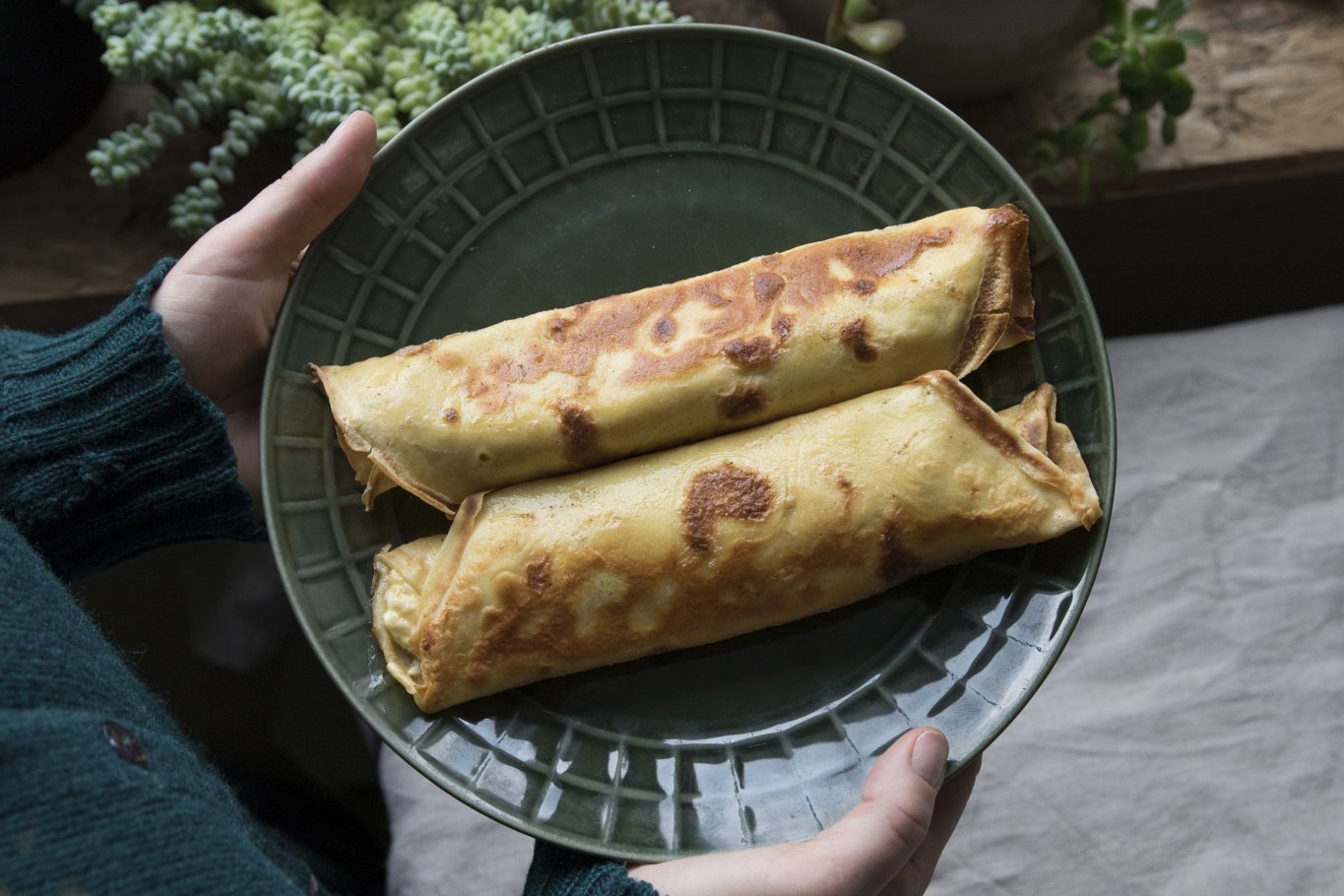
BLINCES
Cook it!
Tisha b’Av
Tisha b'Av is a holiday that falls on the 9th day of the month of Av, commemorating the anniversary of the destruction of the First and Second Temples in Jerusalem. It is a holiday of mourning, preceded by three weeks of repentance, during which one must abstain from eating meat and drinking wine. The Shabbat that falls during this period bears the stigma of sorrow. On the holiday itself, there is a 24-hour fast that lasts from dusk until the evening of the following day. As on Yom Kippur, it is forbidden to eat or drink.

SCROLL or CLICK&HOLD
to go on
